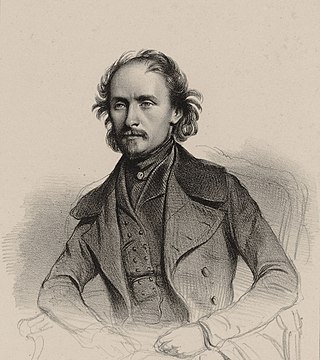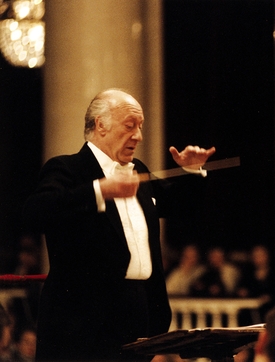
Three Pieces for String Quartet is a composition by Russian composer Igor Stravinsky. It was finished in 1914, revised in 1918, [1] and eventually published in 1922. [2]

Three Pieces for String Quartet is a composition by Russian composer Igor Stravinsky. It was finished in 1914, revised in 1918, [1] and eventually published in 1922. [2]
As most of the works by Igor Stravinsky, this three-movement work was arranged from a four-hands one-piano version, from which the final revised version of 1918 derives and differs in some respects. The manuscript (originally titled IStravinsky. Trois pièces pour quatuor à cordes – reduction pour piano à quatre mains par moi, IStr.) contained no movement titles for any of the three pieces. However, with the passing of time, Stravinsky rearranged these three movements for large orchestra, together with his Étude pour pianola , and premiered the whole collection as Quatre études in 1928. [1]
The term string quartet in the title refers to string quartet more as an ensemble, rather than a genre. Therefore, the work challenges the traditional notion of string quartet with its implied musical form and idiom. As music critic Paul Griffiths points out,
Stravinsky's work, for the first time in the history of the genre, is determinedly not a 'string quartet' but a series of pieces to be played by four strings. There is no acknowledgement of a tradition or a form, and the lack of any such acknowledgement seems iconoclastic because of our own experience of the genre's traditions. The notion of quartet dialogue has no place here, nor have subtleties of blend: the texture is completely fragmented, with each instrument sounding for itself. [3]
This collection of pieces takes approximately seven minutes to perform. There are three movements:

The term string quartet refers to either a type of musical composition or a group of four people who play them. Many composers from the mid-18th century onwards wrote string quartets. The associated musical ensemble consists of two violinists, a violist, and a cellist. The double bass is almost never used in the ensemble mainly because it would sound too loud and heavy.

Henri Paul Julien Dutilleux was a French composer of late 20th-century classical music. Among the leading French composers of his time, his work was rooted in the Impressionistic style of Debussy and Ravel, but in an idiosyncratic, individual style. Among his best known works are his early Flute Sonatine and Piano Sonata; concertos for cello, Tout un monde lointain... and violin, L'arbre des songes ; a string quartet known as Ainsi la nuit ; and two symphonies: No. 1 (1951) and No. 2 Le Double (1959).
Sir Lennox Randal Francis Berkeley CBE was an English composer.

Alexander Tansman was a Polish composer, pianist and conductor who became a naturalized French citizen in 1938. One of the earliest representatives of neoclassicism, associated with École de Paris, Tansman was a globally recognized and celebrated composer.

Henri Jérôme Bertini was a French classical composer and pianist. He was born into a family of musicians and attracted the attention of François-Joseph Fétis when he toured Europe as a child prodigy. As an adult he was admired both as a soloist and as a chamber musician; it was said that he played with Johann Nepomuk Hummel's simplicity and elegance without sacrificing the brilliance of the instrument. As a composer he had an original style which was rich in musical ideas, attractive melodies, and effortless harmonies. In 1856, he retired from the musical scene and settled in the Dauphiné in south-east France.
Nikolay Alexandrovich Sokolov was a Russian composer of classical music and a member of the circle that grew around the publisher Mitrofan Belyayev.
Jacques Castérède was a French composer and pianist.
Quatre études, pour orchestre is a collection of arrangements of works by Russian composer Igor Stravinsky. This composition was finished in 1928 and premiered in Berlin in 1930 by Ernest Ansermet. It was revised afterwards in 1952.
Quatre Études de rythme is a set of four piano compositions by Olivier Messiaen, written in 1949 and 1950. A performance of them lasts between 15 and 20 minutes.
The Étude pour Pianola is a 1917 composition for Pianola by Russian composer Igor Stravinsky. The Étude was first published on music roll in 1921 and the premiere was given by Reginald Reynolds at Aeolian Hall in London, on 13 October of that year.
Three Easy Pieces, also referred to by its original French title Trois pièces faciles, is a collection of pieces for four hands by Russian composer Igor Stravinsky. It was finished in 1915 and was published as a set in the winter of 1917.
Five Easy Pieces, also referred to by its original French title Cinq pièces faciles, is a collection of pieces for four hands by Russian composer Igor Stravinsky. It was finished in 1917 and was published as a set in the winter of 1917/18.

Claude Pascal was a French composer.

Yuri Alexandrovich Falik was a Russian composer, orchestral conductor, cellist, a board member of the Leningrad (Saint-Petersburg) branch of the Composers' Union, and People's Artist of Russia.
Livre pour quatuor is a composition for string quartet by Pierre Boulez.